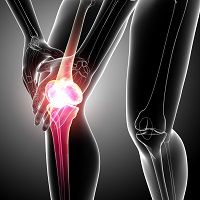Article
Balneotherapy and Physical Therapy Reduce Sleep Disturbances in Patients with Knee Osteoarthritis
Author(s):
Study results suggest that balneotherapy and physical therapy can not only reduce nocturnal pain for patients who suffer from knee osteoarthritis, but can also improve sleep quality.

A study published online in Archives of Rheumatology suggests that balneotherapy (BT) and physical therapy (PT) can not only reduce nocturnal pain for patients who suffer from knee osteoarthritis, but can also improve sleep quality.
Pain (31%), sleep maintenance (81%) and early morning awakenings (51%) are common among knee OA patients, and all three of those problems can increase with the severity of the condition. The goal of OA treatment is to reduce joint pain and inflammation
while improving and maintaining joint function. Pharmacologic treatments for OA are numerous and ever-expanding, but the lengthy duration of treatment needed for most patients and the potential side effects of powerful medications make more conservative treatments such as rest, exercise, physical therapy and balneotherapy important tools in the treatment arsenal.
Earlier studies have shown that both BT and PT can be effective at treating inflammation, but there is little clinical evidence on the effects of the tools in improving sleep disturbance (SLD).
The current study involved 199 patients (76 males, 123 females; mean age 67.8±7.3 years; range 50 to 85 years) suffering from knee OA for more than 6 months. Sleep and functional status were assessed at baseline and after 19 sessions of BT and 15 sessions of PT by using Pittsburgh Sleep Quality Index (PSQI) and Western Ontario and McMaster Universities Osteoarthritis Index (WOMAC), respectively. WOMAC results showed showed significant reduction in pain at one-month compared with baseline (p<0.05). Patients scored higher on the PSQI at baseline than at one-month.
“To our knowledge, this study is one of the largest and most rigorous trials of the efficacy of BT and PT on sleep,” the authors wrote. They posit that the heat and thermal effects of BT may increase the “extensibility of collagen-rich tissues,” thus improving patients’ range of motion, diminishing muscle plain, and relieving muscle spasms. “Furthermore, heat may increase secretion of cortisol and catecholamines by thermal stress, thus having an anti-inflammatory effect...without ignoring the possible contribution of the chemical substances, we suggest that the observed improvements in the clinical variables in this study were mainly due to the thermal effect.”
The researchers noted that even after treatment with anti-inflammatory medications, patients with OA show significantly greater incidence of sleep disturbance compared to age-matched control subjects. “Given the likely reciprocal effects between pain and SLD, distinguishing unique causal pathways is difficult. Chronic pain initiates and exacerbates SLD; disturbed sleep in turn maintains and exacerbates chronic pain and related dysfunction. The question is whether an intervention that improves sleep in individuals with disturbed sleep and comorbid pain state, such as OA, might reduce pain as well.”
The most significant limitations of the study are a lack of a control group and the possibility that the environment of BT and PT delivery contributed to a placebo-like effect.




